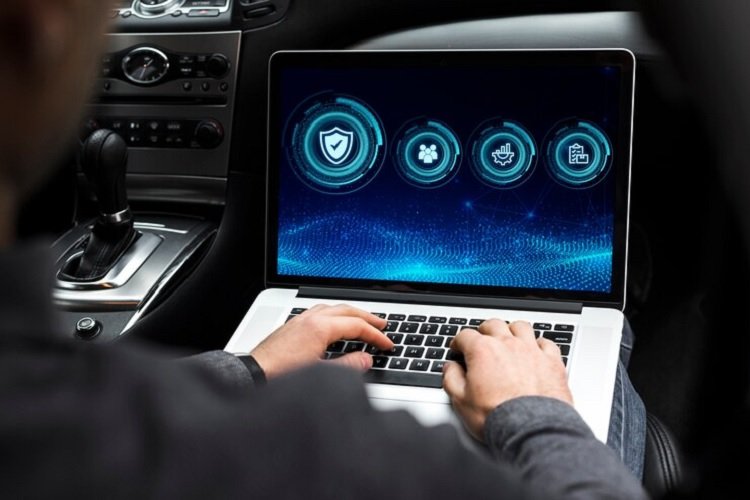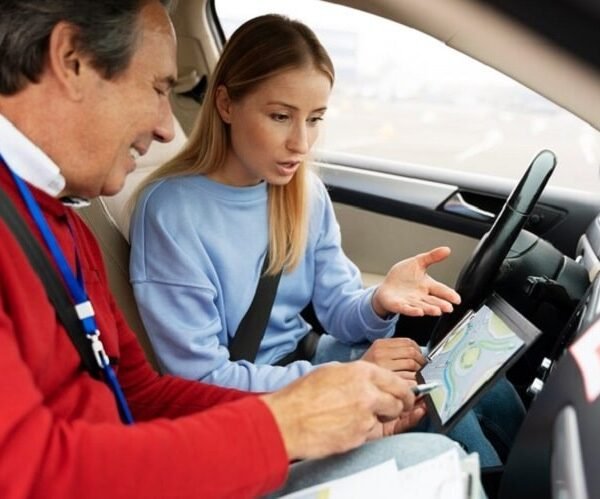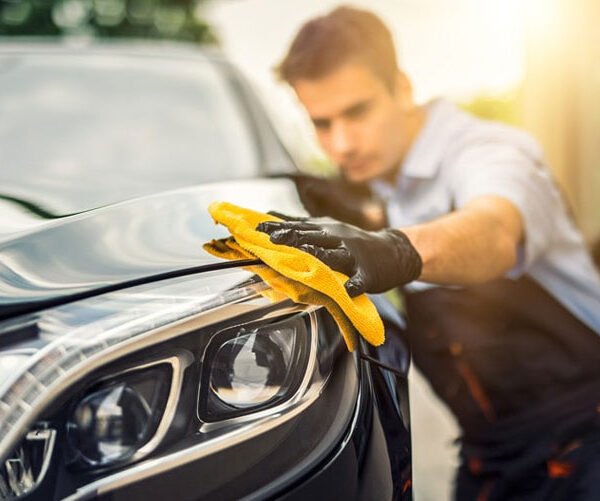5 Common Car Problems and How to Fix Them Yourself
Having car trouble can be a frustrating and inconvenient experience. Paying for costly repairs or waiting on mechanics to fix issues removes valuable time that could be spent more enjoyably. Thankfully, many of the most common car problems—like low tires, dead batteries, squeaky brakes, engine sputtering, or burnt-out headlights—can often be resolved with some DIY troubleshooting and simple tools.
Equipping yourself to handle basic car repairs allows you to quickly get back on the road while saving the headache and expense of complicated mechanical issues. This article will explore five of the most widespread automotive problems that drivers face and provide actionable guidance for diagnosing and addressing those problems yourself.
Common Car Problems
While the intricacies under a vehicle’s hood may seem mysterious to everyday people, many recurring issues stem from understandable components. Mastering maintenance on these fundamental car parts empowers you to resolve problems confidently when they emerge.
Low or Flat Tires
Dealing with low or flat tires ranks among the most ubiquitous issues for motorists. Thankfully, tending to tired treads represents one of the most straightforward car repairs you can make yourself.
Common causes leading to insufficient tire pressure include:
- Natural air leakage over time
- Punctures from driving over nails or debris
- Damage from curbs when parking
Regardless of the root cause, low pressure levels or deflated rubber can create hazardous handling situations and lead to irreparable tire damage if left unattended.
Dead or Low Battery
The battery is the lifeline of your vehicle, powering everything from the engine and lights to onboard computers and stereo. So when car batteries die or lose their charge, your entire ride can be rendered undriveable.
Some of the most frequent reasons for battery troubles include:
- Natural chemical breakdown over years of use
- Parasitic drains from electronics being left on
- Freezing winter temperatures slowing chemical reactions
- Corroded or loose battery connections
Replenishing a dead battery or replacing an expired one is affordable and straightforward with minimal mechanical skills.
Squeaky or Grinding Brakes
The unnerving screech of brake pads indicating the end of their lifespan represents a common occurrence. And neglecting worn brake components accelerates detrimental damage.
Brake noises tend to result from:
- Excessively worn-down brake pads or shoes
- Debris caught between pad and rotor
- Caliper issues causing uneven pad contact
Replacing brake pads or calipers when they start chirping or grinding restores safe braking operation, extends the life of costlier rotors and prevents catastrophic brake failures.
Engine Sputtering
Occasional stutters or misfires as you accelerate likely indicate a relatively minor engine issue. However, leaving those sputters unchecked can lead to complete breakdowns if problems like worn spark plugs worsen.
Some main culprits behind sputtering include:
- Weak or fouled spark plugs
- Faulty oxygen sensors
- Clogged air filters causing limited airflow
Tuning up spark plugs, replacing oxygen sensors or swapping clogged air filters represents fairly straightforward servicing you can easily handle yourself.
Burnt-Out Headlights
Few roadside failures prove more immobilizing than burnt-out headlights when driving at night. Sudden darkness severely impairs visibility and leaves you stranded wherever the lights cut out.
The most common reasons for burnt-out headlights are:
- Filament failure after extensive use
- Loose wiring shorting out bulbs
- Damage from road debris cracking lenses
- Moisture seeping into housings
Carrying spare bulbs and being able to safely replace them yourself eliminates the paralyzing effects of burnt-out headlights.
Arming yourself with the knowledge to identify common car troubles empowers you to proactively resolve issues before small problems cascade into costly headaches. Now let’s explore step-by-step instructions for accurately diagnosing and fixing the covered car problems without professional assistance.
How to Fix Them Yourself
Step-by-Step Guide for Fixing Low or Flat Tires
Repairing low or flat tires requires no previous mechanical experience and basic tools like a jack, lug wrench, and air compressor. Follow these steps for DIY tire repairs:
- Locate the problematic tire – Identify which tire is suffering from insufficient air pressure or a puncture by visual inspection and feeling for softness. Mark its location with chalk.
- Retrieve your spare tire and tools – Most vehicles carry necessary equipment like jacks and lug wrenches for changing tires. Locate those tools along with your spare or patch kit.
- Park on level, hard ground – Choose a spot clear of traffic offering room for you to work safely on level pavement to stabilize the car.
- Engage parking brake and chock wheels – Prevent accidental movement by firmly engaging the parking brake and placing chocks to block wheels.
- Loosen lug nuts – Using your lug wrench, slightly loosen the nuts securing the problematic tire without fully removing them.
- Jack up the vehicle – Following jacking points specified in your owner’s manual, crank your jack underneath the car’s frame near the bad tire.
- Remove lug nuts and tire – With the tire raised off the ground, unscrew the lug nuts completely with your wrench to pull the wheel free.
- Apply sealant or swap tire – Fix simple punctures using a tire plug or sealant kit. For shredded tires or blowouts, mount the spare in place of the damaged wheel.
- Reinstall lug nuts – Align the replacement tire and hand tighten the lug nuts securely before lowering the jack.
- Lower vehicle and torque nuts – After descending the car completely, utilize your wrench to torque the lug nuts to their final proper tightness.
- Refill air – If sealing a puncture, reinflate the tire to the manufacturer’s specified pressure level using an air compressor.
- Stow equipment and remove chocks – With the repair complete, collect your gear, tools and stowed chocks before safely driving away.
This process allows you to reliably inspect tires, swap wheels and restore air pressure without relying on external roadside assistance.
Instructions for Jump-Starting a Dead Battery
Reviving a dead car battery using jumper cables represents one the most convenient roadside fixes available. Simply follow these key steps whenever batteries lose charge:
- Position donor vehicle – Park a functioning vehicle with a strong battery beside the disabled car, ensuring the vehicles do not touch.
- Engage parking brakes – Firmly engage the parking brakes in both vehicles to prevent accidental movement during the jumpstart process.
- Connect positive terminals – Attach the red jumper cable clamp securely to the positive terminal on each battery.
- Connect negative terminals – Connect the black jumper cable clamp to the negative battery terminal on the healthy battery.
- Attach ground cable – Affix the opposite clamp from the negative jumper cable to a metal grounding point away from the dead battery.
- Start donor engine – With cables connected, start the engine in the functioning jump vehicle and let it idle.
- Attempt ignition – After 5 minutes of charging, turn the ignition switch in the disabled vehicle to start its engine without revving it.
- Disconnect in reverse – Only once both cars run properly, reverse the connection order step-by-step to disconnect cables.
- Let car charge – Drive the revived car for at least 30 minutes to let the alternator recharge the battery completely after disconnecting the cables.
Employing thisstraightforward sequence allows you to reliably bring stranded vehicles back to life using basic jumper cables. But consistently dead batteries require replacement to restore reliable operation.
DIY Brake Maintenance and Troubleshooting
Unlike intricate internal engine components, brake pads represent easily serviceable items accessible without raising the vehicle or specialized tools. Use this process when dealing with brake noise or lagging performance:
- Inspect pads visually – Wheels removed, check pad thickness on calipers directly to approximate remaining life and look for debris.
- Listen when braking – Test brakes at low speeds where noises indicate issues like worn pads, uneven rotor contact or sticking calipers.
- Check rotors and calipers – Feel rotors for grooving and calipers for looseness or leaks indicating a larger underlying issue behind noises.
- Replace worn pads – If adequate thickness remains but debris is present, clean pads thoroughly. If too thin, unbolt old pads to install replacements.
- Consider rotor resurfacing – When deeply grooved, rotors may need resurfacing or replacement if beyond the maximum thickness specifications.
- Bleed brakes – Minimal brake fluid leaks at calipers when changing pads require you to bleed brakes to remove trapped air using a bleeder kit.
- Road test vehicle – After servicing brakes and bleeding the system, road test the vehicle at slow speeds to confirm pads mate smoothly and silencing noises.
Regular at home brake inspections and replacing pads early provides cheap insurance against extensive brake damage over time.
Tips for Addressing Engine Sputtering
Diagnosing root causes behind engine misfires simply requires methodically considering potential issues in order of likelihood:
- Evaluate spark plugs – Start by inspecting spark plugs in cylinder sequence, looking for corrosion, gap issues or fouling indicating a bad plug.
- Consider airflow path – Next, check for clogged air filters, crimped hoses or debris limiting air intake apacity critical for combustion.
- Inspect oxygen sensors – Damaged sensors can improperly regulate fuel injection levels also causing sputtering conditions.
- Troubleshoot spark delivery – Faulty ignition wires failing to deliver spark spark can shut off fuel delivery from clogged injectors.
- Check fuel filters – Restricted filters decrease available fuel for cylinder firing during acceleration spurts when sputtering manifests most.
- Swap ignition components – Replace components one at a time, road testing between each swap to isolate the specific component inducing misfires.
Thoughtfully evaluating engine operations in this order saves guesswork tracking down sputtering issues. And replacing components is straightforward for most DIYers.
Replacing a Burnt-Out Headlight
When headlights unexpectedly go dark, follow these key steps to safely get back on the road:
- Locate replacement bulbs – Retrieve identical replacement bulbs for your vehicle either from your trunk spare kit or by purchasing new ones immediately.
- Gain access behind housing – Referring to your manual, carefully remove necessary components blocking access behind the burnt-out headlight.
- Disconnect wiring – Unplug the rear power connector to the disabled headlight assembly once you gain clear access.
- Unseat bulbs – Compress bulb retaining clips or screws to release the dead bulb from the rear of the housing.
- Insert replacement – Avoid touching replacement bulbs directly and connect wire harness before aligning it into the vacant socket.
- Test operation – Restore power connections, turn lights on and confirm proper operation before reassembling housing components.
Carrying spare bulbs you can install yourself using basic tools is wise preparation against after-dark breakdowns. Seeking professional assistance only becomes necessary for issues with headlight housing seals or electrical failures.
While many prevalent car problems appear complex externally, tracing issues to fairly simple components makes DIY repairs accessible. Let’s explore additional vehicle maintenance tips to enhance longevity and prevent repair roadblocks altogether.
Car Maintenance Tips
Beyond addressing issues reactively, dedicating yourself to disciplined maintenance prevents many roadside headaches from arising altogether. Adopt these fundamental car care principles:
Routine Maintenance Checklist
Make following this basic maintenance routine habit to maximize vehicle lifespan:
| Maintenance Task | Interval |
| Check engine oil level | Monthly |
| Check tire inflation | Monthly |
| Inspect belts and hoses
|
6 months |
| Replace air filter | Annually
|
| Change spark plugs | 20-60k miles |
| Flush coolant system
|
30k miles |
| Replace timing belt | 60-100k miles |
Following recommended intervals for inspection and component replacement identifies issues early and enhances system efficiency.
Car Care Tips to Extend Vehicle Lifespan
Adopting diligent car care habits maximize durability:
- Wash vehicles regularly to prevent corrosion from road debris and salt accumulation.
- Wax paint every 1-2 years to protect and preserve exterior finish.
- Clean interior surfaces like vinyl and leather to avoid cracking and longevity impairing dirt buildup.
- Store indoors whenever possible to shield the vehicle from weather extremes.
- Keep gas tanks close to full during winter to prevent moisture condensing inside.
Prioritizing routine cleaning, protection and storage represents the most influential control you have over useful car lifespan.
Not Well-Known Maintenance Tips
Lesser known suggestions that enhance car condition include:
- Coating metal components vulnerable to rust with corrosion inhibitors even when living in warm climates.
- Checking transmission fluid levels monthly despite claimed lifetime fluids to safeguard expensive gearboxes.
- Flushing power steering systems when replacing hoses to prevent future pinhole leaks.
- Evaluating alignment specifications yourself when installing new tires to recognize when adjustments become truly necessary.
Seeking reputable mechanics for second opinions on big-ticket maintenance recommendations protects against unnecessary excess too.
While no one enjoys unexpected breakdowns and costly repairs, arm yourself with core knowledge for overcoming the most widespread car issues skillfully yourself. Committing to informed maintenance practices sustains your vehicle’s dependability for the long and enjoyable ride ahead too. With this article’s guidance, may your travels lead you confidently down smooth roads for years to come!











